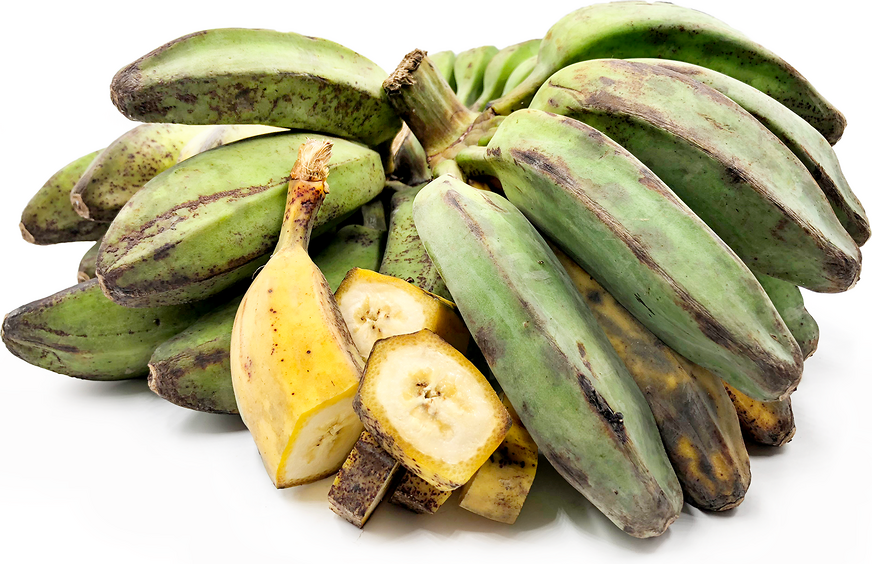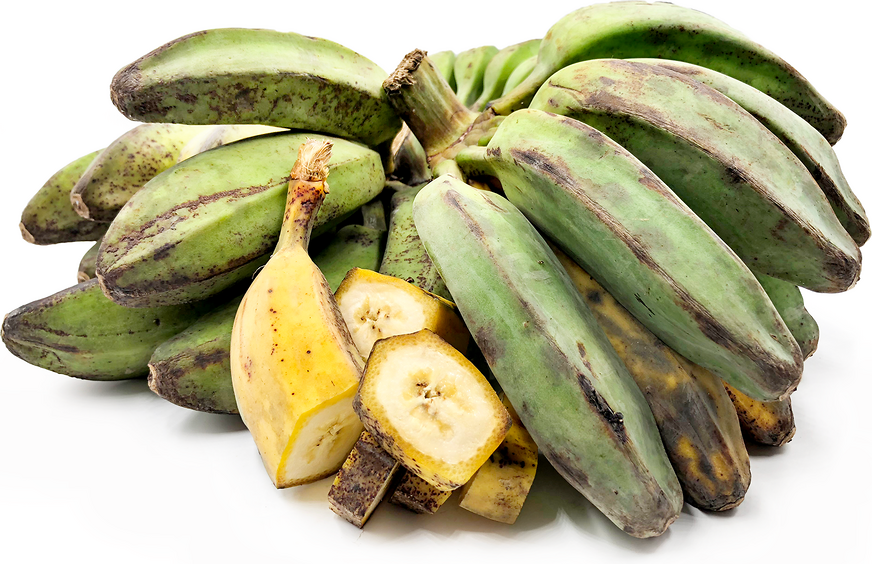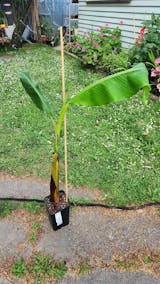Banana - Saba Plantain
- Regular price
-
$70.00 - Regular price
-
- Sale price
-
$70.00
Couldn't load pickup availability
The Saba plantain, also known as the Saba banana or sweet plantain, is a plantain type banana native to the Philippines, and is the most common cooking cultivar. Saba is beginning to be grown in more and more parts of the world, and is viewed as a valuable source of food, since it grows year-round. Though it is more commonly used for cooking purposes, Saba is also often eaten raw.
Saba fruit have high levels of nutrients, making it a good choice for consumption. It is rich in starch, with similar carbohydrate content to a potato. It is also an excellent source of vitamins A, B, and C and contains dietary fibre and iron. Saba fruit has its highest nutritional value when consumed raw, though is more flavourful when cooked,
When fully ripe, plantain bananas possess more starch and less sugar compared to dessert varieties. A common culinary approach involves frying, baking, or grilling ripe plantains until they achieve a caramelized texture.
The Saba Plantain Banana can grow between 3 to 5 meters, influenced by factors like climate, soil, and water availability. In tropical climates, they tend to grow taller than in subtropical regions, and they thrive with well-drained soil and regular watering. When grown in pots, they typically reach a height of 2-3 meters.
For those residing in regions with cold winters, proactive measures are necessary to shield the plant from frost and freezing temperatures. One effective method involves mulching around the base of the plants with a substantial layer of straw or leaves. This serves to insulate the roots, providing protection against the cold. Additionally, wrapping the trunk of the plants in burlap or another insulating material proves beneficial in preventing frost damage.
Banana Plant Care Tips
-
Sunlight: Banana plants thrive in full sun, so it's best to plant them in an area that receives at least 6-8 hours of direct sunlight per day.
-
Soil: Banana plants prefer well-drained soil that is rich in organic matter. A pH range of 5.5-7.0 is ideal for optimal growth.
-
Watering: Banana plants require regular watering, especially during the growing season. Keep the soil moist, but not waterlogged. Overwatering can cause the roots to rot.
-
Fertilizer: Banana plants are heavy feeders and require regular fertilization. Apply a balanced fertilizer every 4-6 weeks during the growing season.
-
Mulching: Mulch around the base of the plant to help retain moisture and suppress weeds.
-
Pruning: Remove any dead or damaged leaves and suckers (smaller offshoots that grow from the base of the plant) regularly. This will help promote healthy growth and prevent disease.
-
Pests and diseases: Banana plants are susceptible to a variety of pests and diseases, so it's important to monitor the plant regularly for any signs of infestation or disease. Common pests include aphids, spider mites, and mealybugs, while common diseases include Panama disease and Sigatoka leaf spot.
-
Harvesting: Bananas are typically harvested when they are fully ripe and the skin is yellow. Cut the bunch off the plant with a sharp knife and allow the fruit to ripen further at room temperature.




